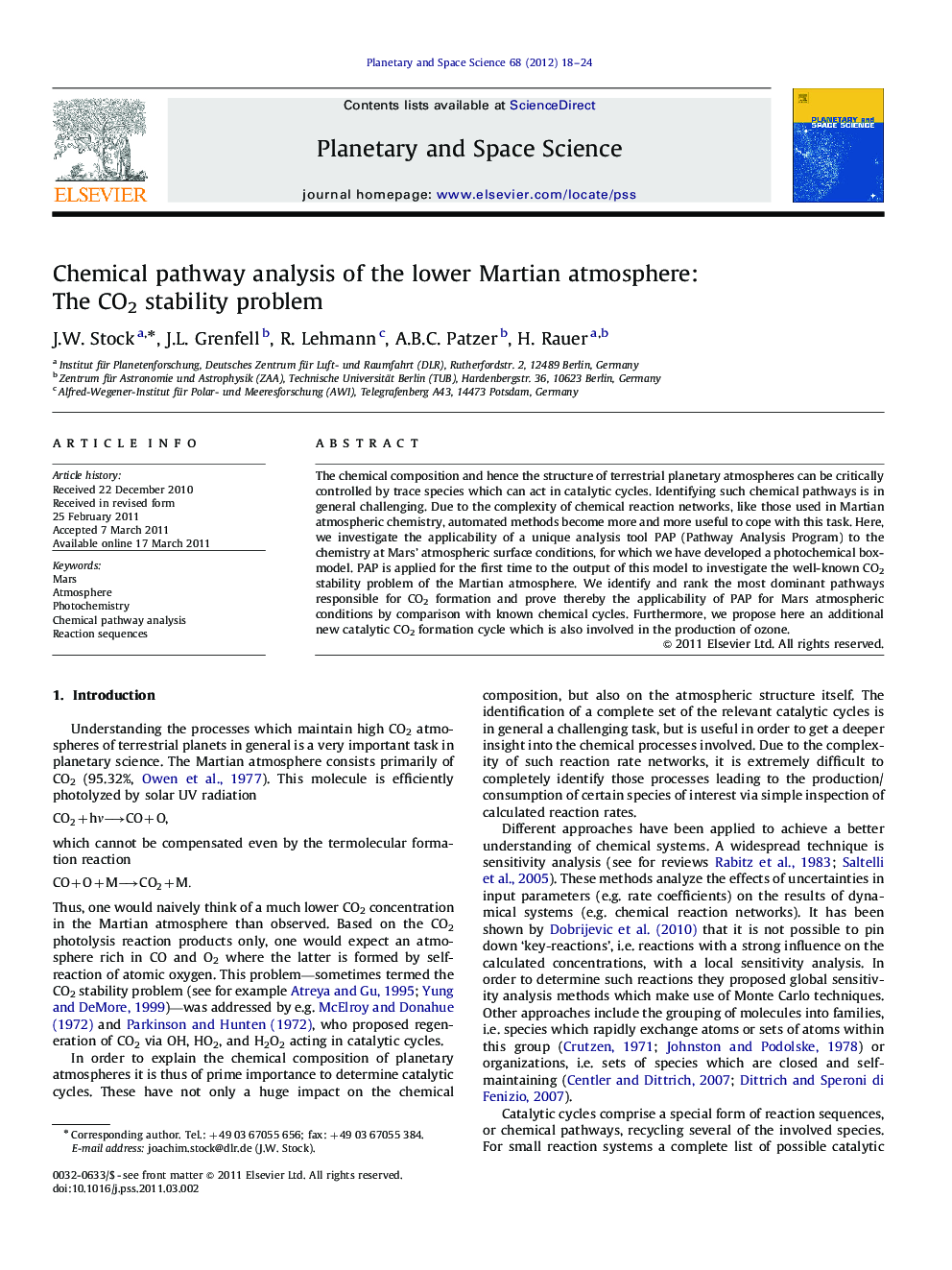| Article ID | Journal | Published Year | Pages | File Type |
|---|---|---|---|---|
| 1781463 | Planetary and Space Science | 2012 | 7 Pages |
The chemical composition and hence the structure of terrestrial planetary atmospheres can be critically controlled by trace species which can act in catalytic cycles. Identifying such chemical pathways is in general challenging. Due to the complexity of chemical reaction networks, like those used in Martian atmospheric chemistry, automated methods become more and more useful to cope with this task. Here, we investigate the applicability of a unique analysis tool PAP (Pathway Analysis Program) to the chemistry at Mars' atmospheric surface conditions, for which we have developed a photochemical box-model. PAP is applied for the first time to the output of this model to investigate the well-known CO2 stability problem of the Martian atmosphere. We identify and rank the most dominant pathways responsible for CO2 formation and prove thereby the applicability of PAP for Mars atmospheric conditions by comparison with known chemical cycles. Furthermore, we propose here an additional new catalytic CO2 formation cycle which is also involved in the production of ozone.
► A new analysis of Mars' near-surface atmospheric chemistry has been performed. ► An automated tool, identifying and quantifying chemical pathways, has been aplied. ► CO2 formation is dominated by a few chemical pathways only. ► A new catalytic CO2 forming cycle has been discovered.
